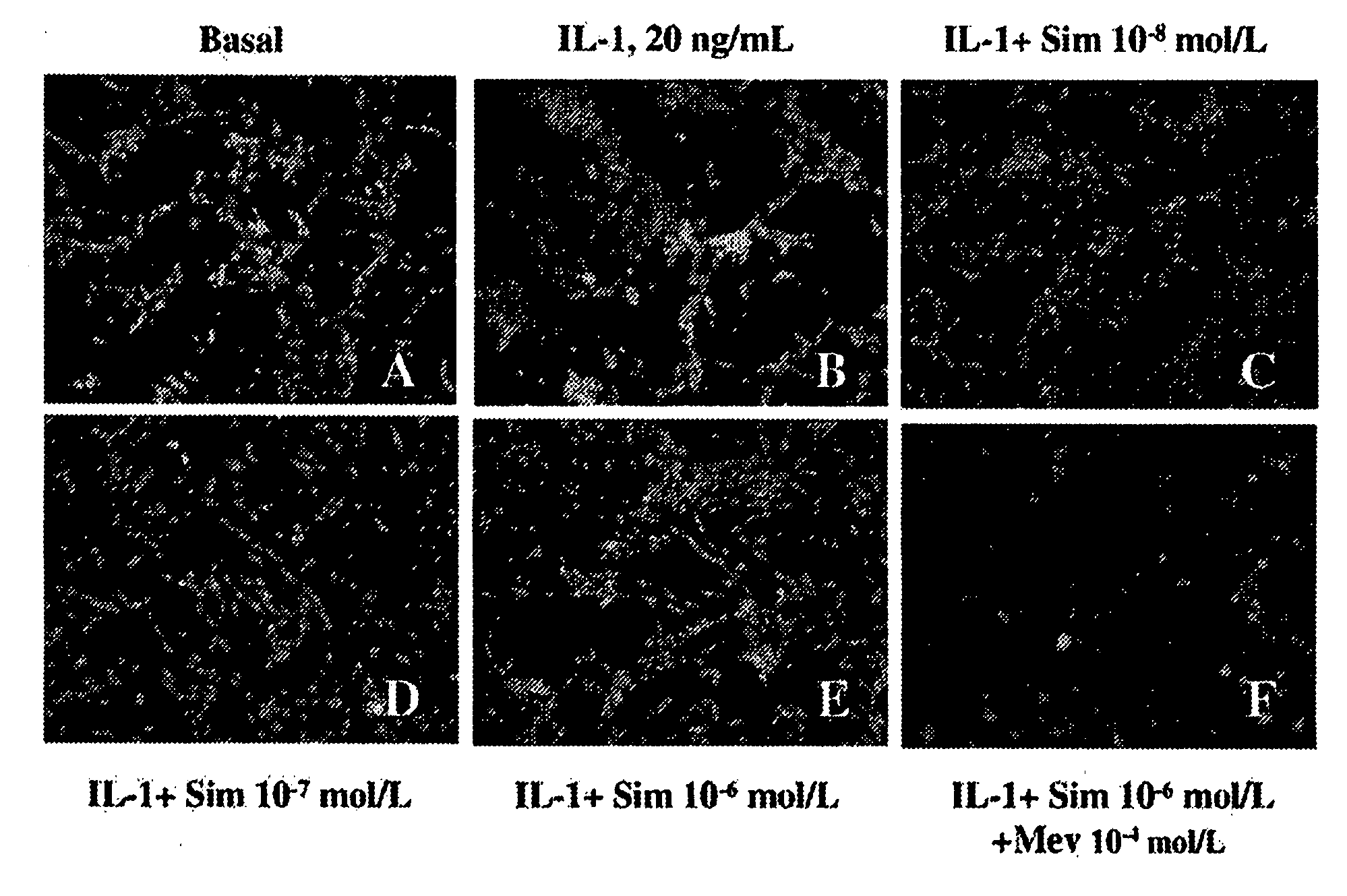Myogenic Development and Protection of Stem Cells Against Inflammation and Apoptosis By Statins and Isoprenoid Pathway Inhibitors
- Summary
- Abstract
- Description
- Claims
- Application Information
AI Technical Summary
Benefits of technology
Problems solved by technology
Method used
Image
Examples
Embodiment Construction
[0052] It is now proposed that at least some statins and isoprenoid pathway inhibitors can be advantageously used to influence cardiovascular stem cell and / or myocyte survival, proliferation and differentiation. Despite the recent knowledge that statin treatment may confer cardioprotection in isolated perfused hearts during ischemia-reperfusion, the molecular mechanism underlying the statin protective effect is unknown. Because stem cells participate in post-ischemic heart repair, it was of interest to determine whether statin treatment inhibits cytokine-induced expression of iNOS in premature, undifferentiated cardiac myoblasts. In this study, a cell culture system was employed to determine whether inhibition of HMG-CoA reductase by simvastatin alters expression of iNOS in embryonic, undifferentiated cardiac myoblasts exposed to proinflammatory cytokines. The resulting data showed that simvastatin treatment significantly reduced expression of iNOS in cardiac myoblasts stimulated wi...
PUM
 Login to View More
Login to View More Abstract
Description
Claims
Application Information
 Login to View More
Login to View More - R&D
- Intellectual Property
- Life Sciences
- Materials
- Tech Scout
- Unparalleled Data Quality
- Higher Quality Content
- 60% Fewer Hallucinations
Browse by: Latest US Patents, China's latest patents, Technical Efficacy Thesaurus, Application Domain, Technology Topic, Popular Technical Reports.
© 2025 PatSnap. All rights reserved.Legal|Privacy policy|Modern Slavery Act Transparency Statement|Sitemap|About US| Contact US: help@patsnap.com



